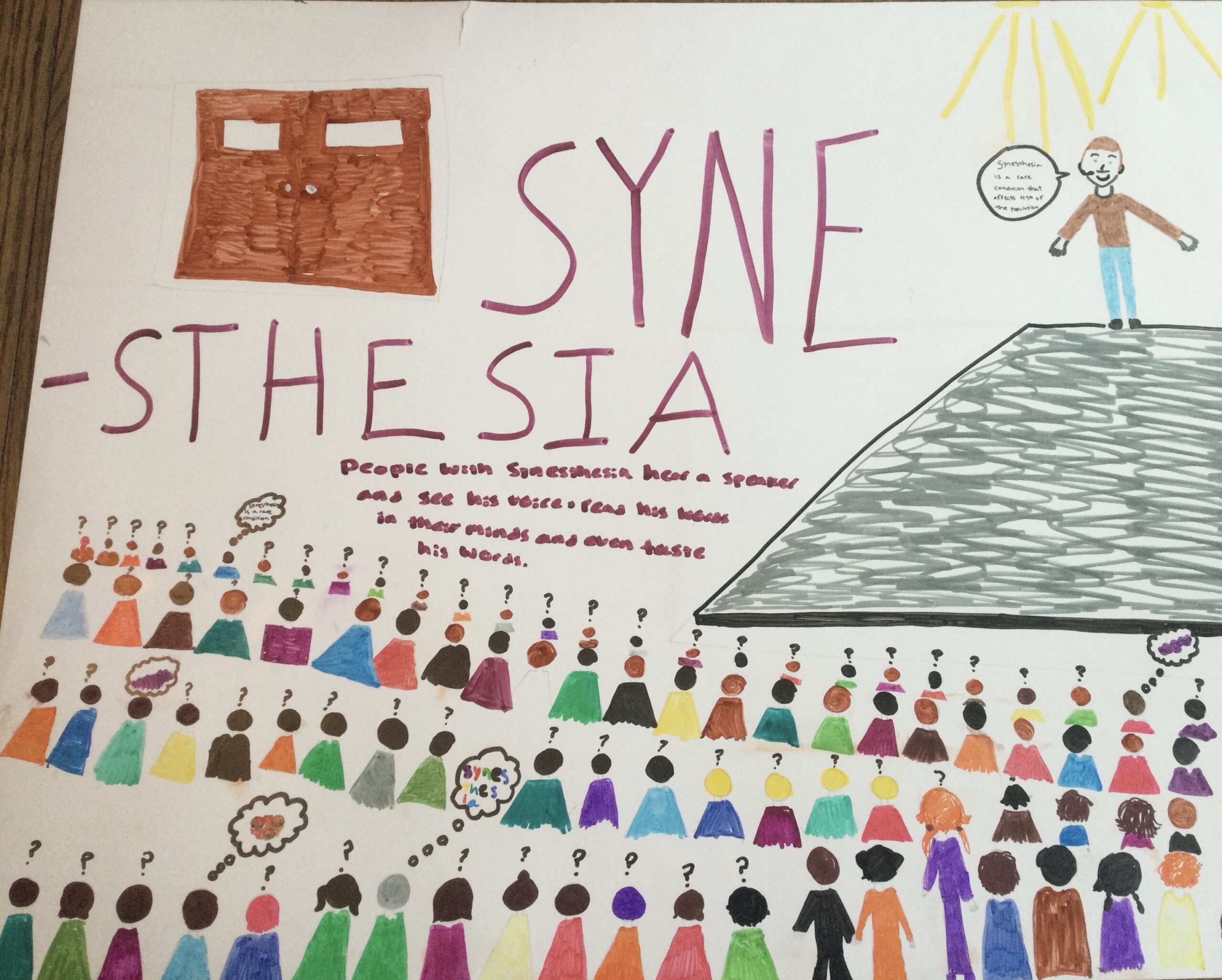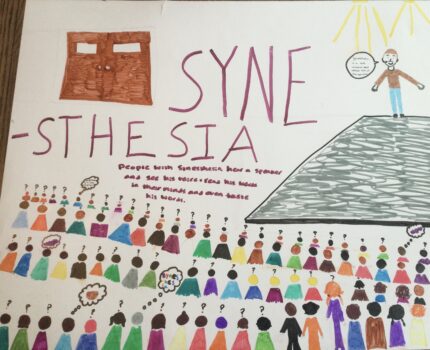I am covering the objective “Identify the components and key structure of the nervous system”. The condition I will be talking about is called synesthesia which is a fascinating abnormality of sensory interpretation. When someone who has synesthesia inhales the scent of homemade bread, for example, a signal goes to the brain via the Somatic Afferent division of the nervous system which carries signals from sense organs to the brain for decoding. This is standard procedure, however, what is not standard is that when the brain recognizes the smell, it associates the smell with a color. This color is not observed by the eyes but the mind’s eye. It may be a color not at all related to the warm brown loaf, such as blue or red. In the following days, the part of the brain that controls memory will remember bread and the color blue as a joined experience.
Color-memory is far from the weirdest manifestation of synesthesia; other types allow for mirrored-touch, if a person with synesthesia sees someone else being touched, they will actually personally experience the feeling of physical contact. One incredible type causes the brain to “see” colors and light when the person hears music. The most common type is grapheme color, where letters, numbers, and shapes have individual hues for the person who sees them.
How is this possible? By looking at the symptoms of synesthesia, we can predict that whatever causes it is involved in the nervous system. The nervous system is very complex, it has two major divisions that split off into many smaller categories. The two major divisions are the central and peripheral nervous systems, although the peripheral nervous system has more components the central nervous system plays a gigantic role in how we function and respond to our surroundings. The central nervous system has two pieces: the brain and the spinal cord. The peripheral nervous system is composed of all the nerves that permeate the body and run to and from the brain and spinal cord.
Starting with the peripheral nervous system, it is split into the afferent and efferent divisions. The entire nervous system is in play when we use our senses and is involved in the experiences of synesthesia. Nerves on a one-way road to the brain with signals generated in the sense organs makes up the afferent division. The efferent division consists of nerves that are exiting the central nervous system and carry a signal that tells the body parts to behave as the brain decides. The afferent division is specifically termed by what parts of the body nerves come from on their journey to the brain, and the efferent division is similarly classified by what locations nerves leaving the brain go to. The Somatic Sensory branch of the Afferent Division Carrie’s signals from the consciously moved body parts. The Visceral sensory carries data regarding the heart, stomach, and glands. The Efferent Division is categorized further than the Afferent Division, into the Somatic Motor and Autonomic Motor systems and then the sympathetic and parasympathetic division. The Somatic Motor division sends movement signals to the skeleton and the Autonomic Motor division gives commands to the involuntary organs. The Parasympathetic Division and Sympathetic Division originate from the Autonomic Motor system. Both directly affect breathing rate and heart rate, one has a depressing effect and the other encourages and increases the speed of these functions. The parasympathetic division counteracts the effects of the sympathetic division which speeds up heart and lung workout in a stressful situation. However, although synesthesia could not take place without nerve signaling, most scientists don’t think synesthesia is caused by an abnormality of the peripheral nervous system.
A current theory about synesthesia blames the layout of the brain for mixed sensory reactions. Let’s take a deeper look at the central nervous system to consider this theory. The central nervous system houses the brain and spinal cord. The two work together to control the actions and reactions of the body, but the brain is busier and more complex than the spinal cord. The spinal cord is like a rope of nervous tissue that extends up to the brain and goes down the back. Signals from the peripheral nervous system go first to the spinal cord and then on to the brain. When immediate, not-premeditated action is required, the spinal cord handles signals describing pain and danger by initiating a reflex that gets the body away from the threat instantaneously.
The brain is in charge of normal thought, emotions, problem-solving thinking, reading, language, speech, and it contains lobes that specialize in receiving input from all five senses. Signals travel through nerves, go up the spinal cord, or down as the case may be, and once reaching the brain, make a pit stop at the thalamus. The thalamus then reroutes the signals to the brain regions that relate to the signal. Here, synesthesia breaks a very important rule: sensory signals only activate their corresponding region. You are supposed to smell a flower, send a signal through the PNS to CNS, recognize the scent and go from there. Synesthesia, however, lets another sense catch a ride on this procedure, and let’s you smell a flower, send a signal to the olfactory center, then the signal turns on the visual cortex for no reason and you see a splash of color in your mind’s eye.
The reason, scientists suspect, that a signal clearly meant for one brain receptor activates two or more is because the lobes and areas of the brain that relate to the senses being mixed in synesthesia are attached to one another, more so than in other people. Though they cannot guarantee this is the cause of synesthesia, brain scans have proven that synesthetes do have more brain-area connections than other people. It would also explain why the reaction to a trigger never varies and the condition is hereditary and why symptoms are present from childhood.
I drew a poster depicting a lecture hall; a professor is standing onstage speaking about synesthesia to an audience which has never heard of it before. Because this is a new concept, the majority of the audience has their minds boggled by the things he is describing, but a few people who have synesthesia but are unaware that they do, experience synesthetic reactions to the sound of his voice and words he is saying. One perceives the word “synesthesia” as tasting like meatballs, sorry for the bad illustration, while another visualizes the letters comprising the word as individually colored. Perhaps the coolest reaction is that two people see the speaker’s voice as a purple swirl.
The goal was to show how an ordinary occurrence would appear to a synesthete but in retrospect I think a more detailed picture of one person’s experience would have been better and more helpful for understanding the concept.

